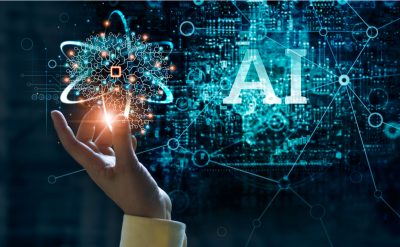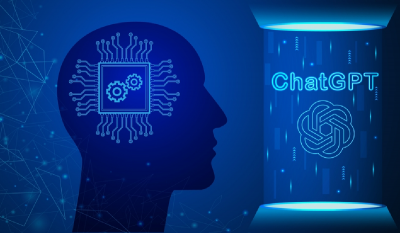The hype about digital transformation is not overrated.
The people talking about digital transformation today are those who are implementing them in the day to day life or trying to build something out of it. With innovation taking place every day, companies should adopt AIOps (artificial intelligence for IT operations) as a vital part of the company’s operations to survive the digital transformation. Therefore, artificial intelligence (AI) seems to play a significant role in the digital world.
In 2025, AI will become a critical component of business survival. But, the companies are still unclear about how they will implement the advantage of AI-driven business decisions. To cover the gap, a new term got introduced as “AI Operations.”
AIOps is a mashup of artificial intelligence (AI) and machine learning (ML) combined with IT operations. It is a growing segment that helps IT Ops teams streamline the way they maintain system reliability. The two ingredients AI and ML, speed’s up analysis of IT problems and puts incident handling towards automation.
“Gartner said on AIOps, “The long-term impact of AIOps on IT operations will be transformative.”
But how does it work for the benefit of companies? Or explain the functionality of AIOps.
Here we go with the quick points as capabilities of AIOps,
1. The best way to drive return on investment (ROI) from AIOps projects is by taking preemptive actions even before the incident occurs. Many organizations prefer AIOps as it proactively prevents performance issues. It indicates component failures, temporary usage spikes, and other similar problems.
“Predictive capacity management is one of the more powerful use cases, given that if you look through ITSM system data, we still have a lot of outages driven by running out of computing power.”
—Rich Lane
For example, the operator should know that service will run out of capacity next Tuesday, which will lead to suggesting the option of approving an automatic spin-off of resources on Monday. “I don’t want to have to remember that myself. I don’t want to have to write a script to do that. I want the system to be smart enough to recognize it,” Lane said.
It brings the capability of automating the adjustment or stretch it to the point where it can decide or act.
Gartner predicts that large enterprises exclusively use AIOps and will rise from 5% in 2018 to 30% in 2023.
“IT leaders are enthusiastic about the promise of applying AI to IT operations, but as with moving a large object, it will be necessary to overcome inertia to build velocity,” says Padraig Byrne, Research Director with Gartner’s IT Systems, Security and Risk research group. “The good news is that AI capabilities are advancing, and more real solutions are becoming available every day.”
2. Some organizations try to get maximum value from AIOps by establishing projects that use AIOps insights to drive automated remediation of issues. So, AIOps have self-healing capabilities as it uses analytics and learning models of AI. It identifies the problem and takes a step towards correcting it automatically, acting like a mirage to IT operations.
“There’s been this perennial concern you’re going to accidentally kick off some sort of action that’s going to make the problem worse or create new problems. But if you’ve got these machine-learning tools in place that are intelligently and accurately diagnosing a problem, then you can much more smartly initiate an automated response that can solve a problem for you.”
—Nancy Gohring
3. AIOps can perform IT incident management in one of the most remarkable ways. The AIOps platforms can ingest and amp; manage monitoring data, analyze it with great depth and speed, which is not possible by standard human analysis.
Serving the IT organizations, AIOps technology identifies the ticketed events, de-duplicate ticket, correlate issues, prioritize essential events, and deliver actionable alerts.
Rich Lane, the senior analyst for Forrester Research, said AIOps could let you and your team focus on what matters most.
“You lose a core switch in the data center and you get 5,000 or 6,000 tickets opened or alerts, and you can’t keep up with it. The machine learning bubbles up the important alerts to the surface to get that one alert you’re supposed to be starting with.”
—Rich Lane
Matt Stratton, head of digital and data in the Americas for Orange Business Services, talked about the importance of AIOps from a different angle. She said, with AIOps, it requires only few people to handle the incidents, which also led to the increased speed of the response. There is a notable difference in time taken to detect the root cause of cloud performance issues, as identified by a Digital Enterprise Journal (DEJ) Study.
Building it up for business
There are majorly two layers of AIOps that businesses should implement in their environment. For the companies who are actively looking to implement AI to drive insights, transform business practices, and survive the digital transformation, they should leverage the below pre-requisites primarily:
Flexible Environment
AI models are a part of a more extensive system. The environment needs to be scalable and flexible so that the technology can easily integrate with the existing systems that the companies are using already.
Efficient Team
Apart from a flexible environment, it is essential to have a team that easily adapts to the changing climate. Either you can opt for an AIOps team or create an in-house team through hiring and promoting. And for AIOps, you can tie-up with an AIOps vendor who will provide the right expertise.
If your organization is already having AI as a vital part of it or wishes to implement, then shift towards AIOps. It is not only a plus one but also a competitive necessity for your business. Like it is said above, AIOps is a vital part of the company to survive the upcoming digital transformation.
Conclusion
Soon the companies will accommodate changes in IT operations roles. There will be simplified working, AI, and automation entering the world of IT operations. However, the companies implementing AIOps will need more people to curate data, train algorithms, design runbooks, and perform root-cause analysis, maintenance, and incident identification.














